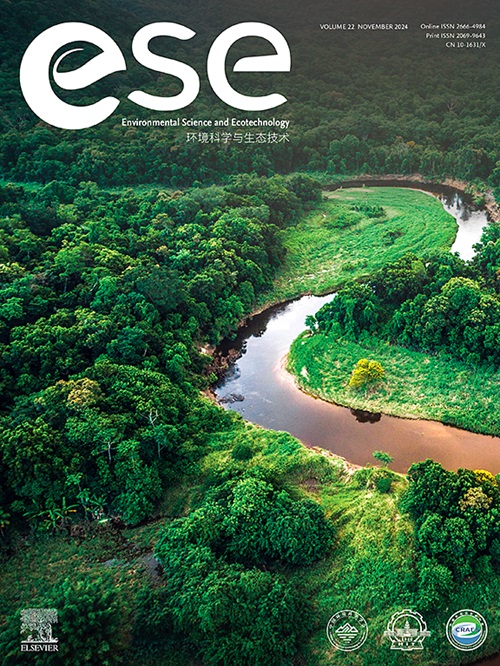Emerging technologies for detecting antibiotics in aquaculture wastewater: A critical review
IF 14.3
1区 环境科学与生态学
Q1 ENVIRONMENTAL SCIENCES
引用次数: 0
Abstract
Antibiotic release and transfer within environmental systems significantly impact ecological stability and human health, posing considerable safety risks. Consequently, accurate and efficient detection methods for antibiotics, particularly within complex environmental matrices, are essential. A growing body of research is focusing on antibiotic pollution in wastewater and other environmental settings. Nevertheless, pervasive matrix interferences in complex water matrices and the inherent limitations of standalone analytical approaches in sensitivity, detection range, and other performance metrics underscore the demand for more robust and versatile detection platforms. Here we show a comprehensive overview and critical assessment of antibiotic contaminants, examining their sources, environmental distribution, and current detection methods. We focus on emerging antibiotic detection technologies, comparing their performance and highlighting suitable application contexts. Furthermore, we discuss fundamental principles and historical advancements in antibiotic detection and analytical methodologies. Finally, we identify significant challenges for antibiotic detection in complex environments, suggest viable strategies for future improvements, and outline promising research directions. This review not only provides essential guidance for advancing environmental antibiotic monitoring but also sheds light on the development of a strategic framework for robust, integrated platforms enabling multiplexed antibiotic monitoring in challenging environmental water matrices.
水产养殖废水中抗生素检测新技术综述
抗生素在环境系统内的释放和转移严重影响生态稳定和人类健康,构成相当大的安全风险。因此,准确和有效的抗生素检测方法,特别是在复杂的环境基质中,是必不可少的。越来越多的研究集中在废水和其他环境环境中的抗生素污染。然而,在复杂的水矩阵中普遍存在的矩阵干扰,以及独立分析方法在灵敏度、检测范围和其他性能指标方面的固有局限性,强调了对更强大、更通用的检测平台的需求。在这里,我们展示了抗生素污染物的全面概述和关键评估,检查它们的来源,环境分布和当前的检测方法。我们关注新兴的抗生素检测技术,比较它们的性能并强调合适的应用环境。此外,我们讨论了抗生素检测和分析方法的基本原理和历史进展。最后,我们确定了在复杂环境中抗生素检测的重大挑战,提出了未来改进的可行策略,并概述了有前途的研究方向。这篇综述不仅为推进环境抗生素监测提供了必要的指导,而且还为在具有挑战性的环境水基质中实现多路抗生素监测的强大综合平台的战略框架的发展提供了线索。
本文章由计算机程序翻译,如有差异,请以英文原文为准。
求助全文
约1分钟内获得全文
求助全文
来源期刊

Environmental Science and Ecotechnology
Multiple-
CiteScore
20.40
自引率
6.30%
发文量
11
审稿时长
18 days
期刊介绍:
Environmental Science & Ecotechnology (ESE) is an international, open-access journal publishing original research in environmental science, engineering, ecotechnology, and related fields. Authors publishing in ESE can immediately, permanently, and freely share their work. They have license options and retain copyright. Published by Elsevier, ESE is co-organized by the Chinese Society for Environmental Sciences, Harbin Institute of Technology, and the Chinese Research Academy of Environmental Sciences, under the supervision of the China Association for Science and Technology.
 求助内容:
求助内容: 应助结果提醒方式:
应助结果提醒方式:


